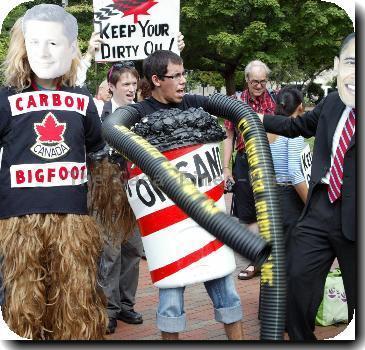BP is encouraged by early results from cap on Gulf well; no sign of underground leak
By Harry R. Weber, APFriday, July 16, 2010
BP is encouraged by early results from Gulf well
NEW ORLEANS — BP said its capped-off well appeared to be holding steady Friday as a white-knuckle waiting period ticked by with engineers watching pressure gauges for signs of a leak.
Results monitored from control rooms on ships at sea and hundreds of miles away at the company’s U.S. headquarters in Houston showed the oil staying inside the cap, rather than escaping through any undiscovered breaches, BP PLC vice president Kent Wells said on a morning conference call.
Four underwater robots scoured the sea floor but had also found no signs of new leaks, he said.
BP and government scientists huddled Friday afternoon to discuss the first 24 hours of pressure readings as they sought to determine whether they can keep the gusher sealed off or have to release some of the flow and funnel it up to vessels on the surface.
What comes out of that meeting could help shape the remainder of the test, according to a BP official with direct knowledge of the operations who spoke on condition of anonymity because the integrity test was at a sensitive stage.
President Barack Obama said Friday the progress was good news, but cautioned an anxious public not to “get too far ahead of ourselves.” Obama said the cap was still being tested and there was still an “enormous clean up job” and ensuring quick compensation for Gulf residents and business in the offing.
There was no evidence of a leak in the pipe under the sea floor, Wells said, one of the main concerns. Wells said the results were encouraging 17 hours after valves were shut to trap oil inside the cap, a test that could last up to 48 hours.
He said pressure continued to rise inside the tight-fighting cap, a good sign that oil was not getting out somewhere else. The pressure was more than 6,700 pounds per square inch, above the minimum they were hoping to see, but not yet in the high range of 8,000 to 9,000 psi they were hoping for.
“The pressures we’ve seen so far are consistent with the engineering analysis work that BP has done,” Wells said. “It’s been a very steady build.”
Wells also said work would resume on a relief well, the oil giant’s more permanent solution meant to plug the leak for good underground to end one of the nation’s worst environmental catastrophes.
That’s also a sign that things were going well. Engineers had stopped drilling one of the wells Thursday in case that bore hole deep underground could be affected by the oil cap effort.
Engineers and scientists continue to monitor the cap’s pressure. When the test is complete, more sea floor mapping will be done to detect any damage or deep-water leaks.
BP finally stopped oil from spewing into the sea Thursday for the first time since an April 20 explosion on the BP-leased Deepwater Horizon oil rig killed 11 workers and unleashed the spill 5,000 feet beneath the water’s surface.
The accomplishment was greeted with hope, high expectations — and, in many cases along the beleaguered coastline, disbelief. BP Chief Operating Officer Doug Suttles urged caution and warned the flow could resume, saying it wasn’t a time for celebration.
There was no end in sight to cleaning the oil already in the water and on shore. Somewhere between 94 million and 184 million gallons spilled into the Gulf, according to government estimates.
Long strands of white absorbent boom strung along the beach were stained chocolate brown at Orange Beach, Ala., early Friday after a fresh wave of pea-sized tar balls washed ashore. Charter boat captains who can’t fish because of the oil spill patrolled the shore looking for more oil slicks.
A few miles away, an oily sheen swirled around a $4.6 million steel oil barrier erected at the pass into Perdido Bay, located near the Alabama-Florida border.
Orange Beach Mayor Tony Kennon said shutting the well meant a light at the end of the tunnel, but the damage is done.
“The other side is they’re not paying claims and I’m watching people moving away, people losing their jobs, everything they’ve got. How can I be that happy when that’s happening to my neighbor?”
Kennon said BP has only paid $50,000 of his city’s claim of $1.9 million for damages and response.
Claims czar Ken Feinberg will administer a BP-paid $20 billion fund for losses from the spill. For some businesses, the process has been difficult enough already.
“They told us that they’re cutting us a check for $14,000, which is pretty much a slap in the face” said Dea Baxter, office manager for Griffin Fishing, a recreational charter fishing service in Lafitte. “We’ve sent more than that out in refunds and cancellations.”
BP said Friday it has paid out $201 million so far to individuals and businesses. It said more than 32,000 claimants got one or more payments in the past 10 weeks.
More than 114,000 claims have been submitted so far, but nearly half didn’t have enough information for BP to make payment, the oil giant said.
On Pensacola Beach in Florida, dozens of BP workers in neon vests operated heavy equipment up and down the beach throughout the night and early morning. Workers used shovels and rakes to comb through the sands for pieces of tar. Other workers then collect the clumps of tar in bags, which are carried by the front-end loaders to dump trucks and hauled away down the beach.
BP said the decision on whether to reopen the well after the test would be made by the government’s national incident command, run by retired Coast Guard Adm. Thad Allen.
It’s not clear yet whether the oil will remain bottled in the cap after the test, or whether BP will use the device to funnel the crude into four ships on the surface.
The cap is a temporary measure until the gusher can be plugged deep underground, where a seal will hold better than by blocking the powerful gusher from the top. BP plans to shoot cement and heavy drilling mud into the well from one of the two relief it is drilling.
The 48-hour watch period started at 3:25 p.m. EDT when the last of three valves in the 75-ton cap was slowly throttled shut.
It came after repeated attempts to stop the oil — everything from robotics to different capping techniques to stuffing the hole with mud and golf balls. The week leading up to the moment where the oil cloud ended was a fitful series of starts and setbacks.
BP officials have said repeatedly they were right to take a step-by-step approach to trying to shut off the geyser over the last three months, to make sure they didn’t make the disaster worse. They have also pointed out that the current cap system in place took time to design and build and to make sure it could withstand the massive water pressures a mile below the sea.
BP removed a previous, looser cap last weekend, at which point oil flowed freely into the water. Robotic submarines swarmed the site to unbolt a busted piece of pipe and install a connector atop the spewing well bore — and by Monday the 75-ton metal cap, a stack of lines and valves, was latched onto the busted well.
After that, engineers spent hours creating a map of the rock under the sea floor to spot potential dangers, like gas pockets. They also shut down two ships collecting oil above the sea to get an accurate reading on the pressure in the cap.
As the oil flowed up to the cap, two valves were shut off like light switches, and the third dialed down like a dimmer switch until it too was choked off.
And just like that, the oil stopped.
The news was met with a mix of joy, skepticism and disbelief from beleaguered Gulf Coast residents. A quiet optimism started to take hold.
Richard Forester, executive director of the Mississippi Gulf Coast Convention and Visitors Bureau, said it’s possible the season can be saved.
“Fortunately, we are still seeing pretty good occupancy because most people recognize we are so much more than a beach destination,” Forester said. “The oil spill has had an impact on our beachfront hotels, charter operations, vendors, gift shops. Whether or not they’ve stopped it, there’s still a lot of oil out there that’s got to be cleaned up.”
The Gulf Coast has been shaken economically, environmentally and psychologically by the hardships of the past three months. That feeling of being swatted around — by BP, by the government, even by fate — was evident in the wide spectrum of reactions to news of the capping.
The fishing industry in particular has been buffeted by fallout from the spill. Surveys of oyster grounds in Louisiana showed extensive deaths of the shellfish. Large sections of the Gulf Coast — which accounts for 60 to 70 percent of the oysters eaten in the United States — have been closed to harvesting.
The saga has also devastated BP, costing it billions in everything from cleanup to repair efforts to plunging stock prices. BP shares, which have lost nearly half their value since the disaster started, jumped in the last hour of Thursday trading on Wall Street after the oil stopped. But they were down again more than 3 percent Friday morning.
Long after the well is finally plugged, oil could still be washing up in marshes and on beaches as tar balls or disc-shaped patties. The sheen will dissolve over time, scientists say, and the slick will convert to another form.
There’s also fear that months from now, oil could move far west to Corpus Christi, Texas, or farther east and hitch a ride on the loop current, possibly showing up as tar balls in Miami or North Carolina’s Outer Banks.
Weber reported from Houston. Associated Press Writers Shelia Byrd in Jackson, Miss., Jay Reeves in Orange Beach, Ala., Kevin McGill in New Orleans, Jennifer Garske King in Washington, Matt Sedensky in Pensacola, Fla., and Ramit Plushnick-Masti in New Orleans contributed to this report.
Tags: Accidents, Alabama, Barack Obama, Coastlines And Beaches, Computing And Information Technology, Environmental Concerns, Florida, Houston, Louisiana, New Orleans, North America, Oil spill, Texas, United States








